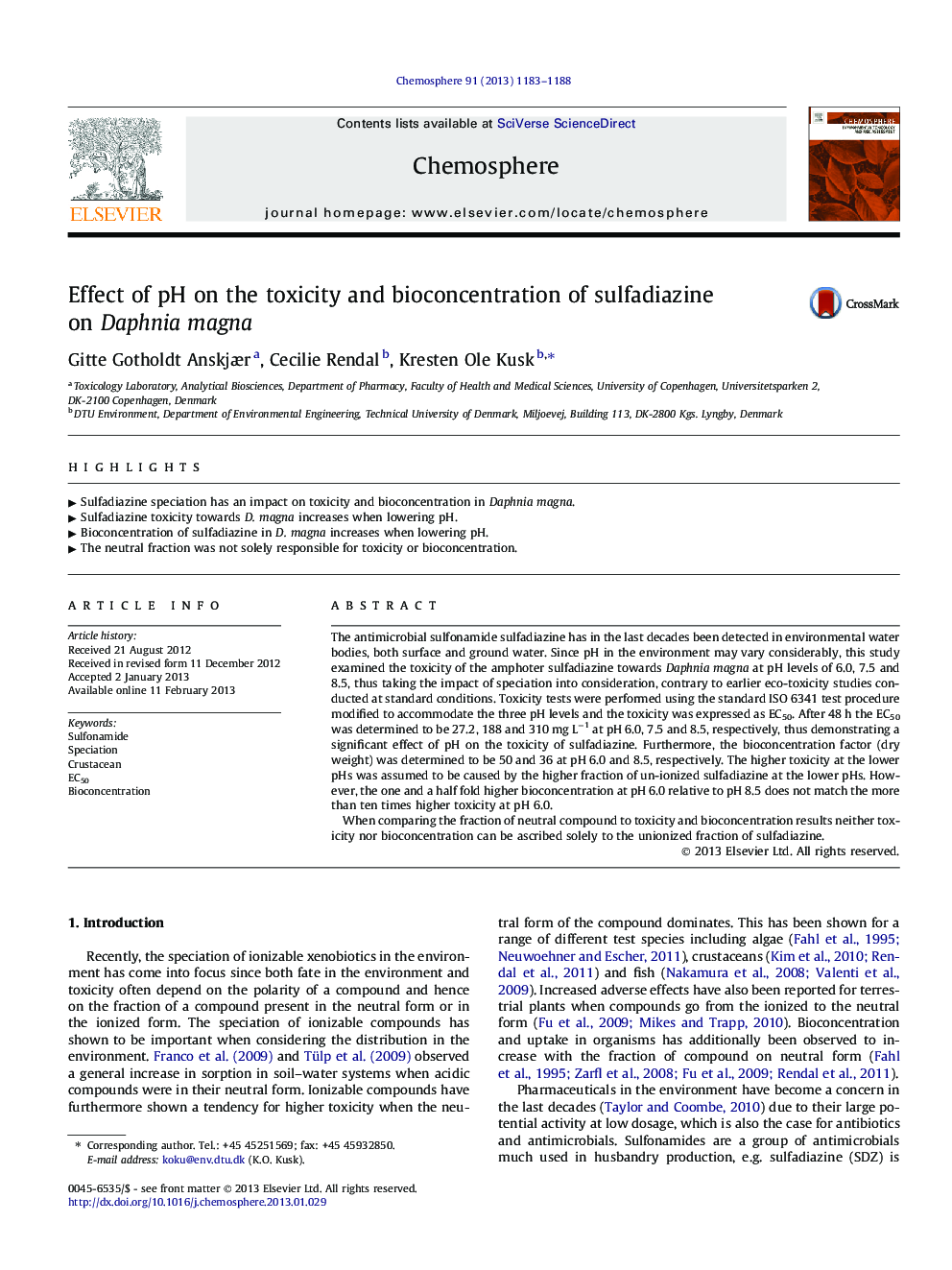| Article ID | Journal | Published Year | Pages | File Type |
|---|---|---|---|---|
| 4409535 | Chemosphere | 2013 | 6 Pages |
The antimicrobial sulfonamide sulfadiazine has in the last decades been detected in environmental water bodies, both surface and ground water. Since pH in the environment may vary considerably, this study examined the toxicity of the amphoter sulfadiazine towards Daphnia magna at pH levels of 6.0, 7.5 and 8.5, thus taking the impact of speciation into consideration, contrary to earlier eco-toxicity studies conducted at standard conditions. Toxicity tests were performed using the standard ISO 6341 test procedure modified to accommodate the three pH levels and the toxicity was expressed as EC50. After 48 h the EC50 was determined to be 27.2, 188 and 310 mg L−1 at pH 6.0, 7.5 and 8.5, respectively, thus demonstrating a significant effect of pH on the toxicity of sulfadiazine. Furthermore, the bioconcentration factor (dry weight) was determined to be 50 and 36 at pH 6.0 and 8.5, respectively. The higher toxicity at the lower pHs was assumed to be caused by the higher fraction of un-ionized sulfadiazine at the lower pHs. However, the one and a half fold higher bioconcentration at pH 6.0 relative to pH 8.5 does not match the more than ten times higher toxicity at pH 6.0.When comparing the fraction of neutral compound to toxicity and bioconcentration results neither toxicity nor bioconcentration can be ascribed solely to the unionized fraction of sulfadiazine.
► Sulfadiazine speciation has an impact on toxicity and bioconcentration in Daphnia magna. ► Sulfadiazine toxicity towards D. magna increases when lowering pH. ► Bioconcentration of sulfadiazine in D. magna increases when lowering pH. ► The neutral fraction was not solely responsible for toxicity or bioconcentration.
